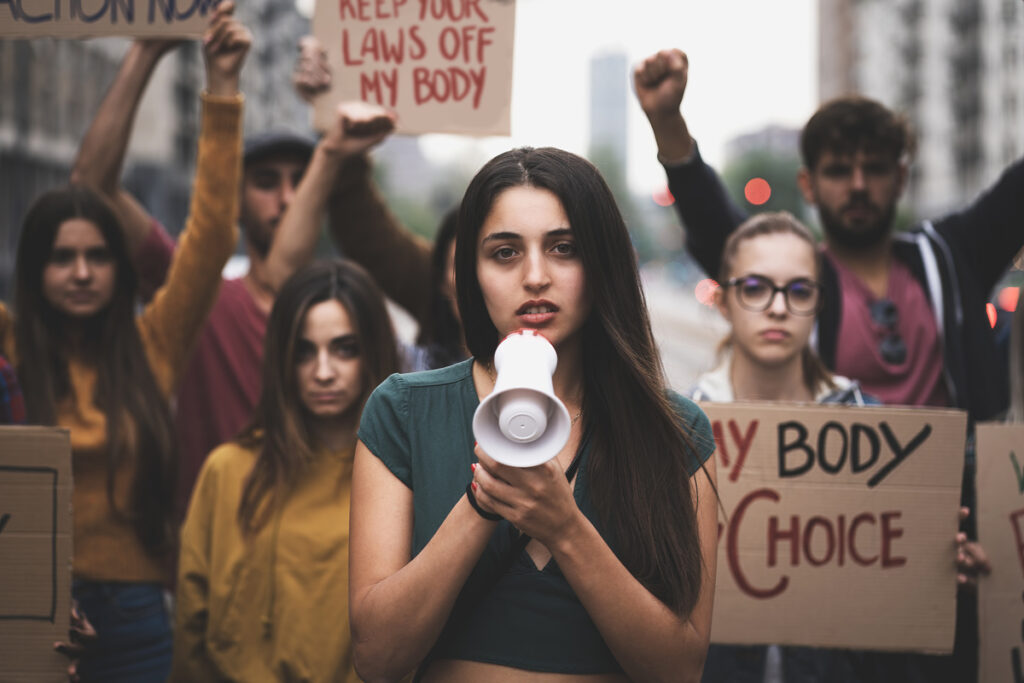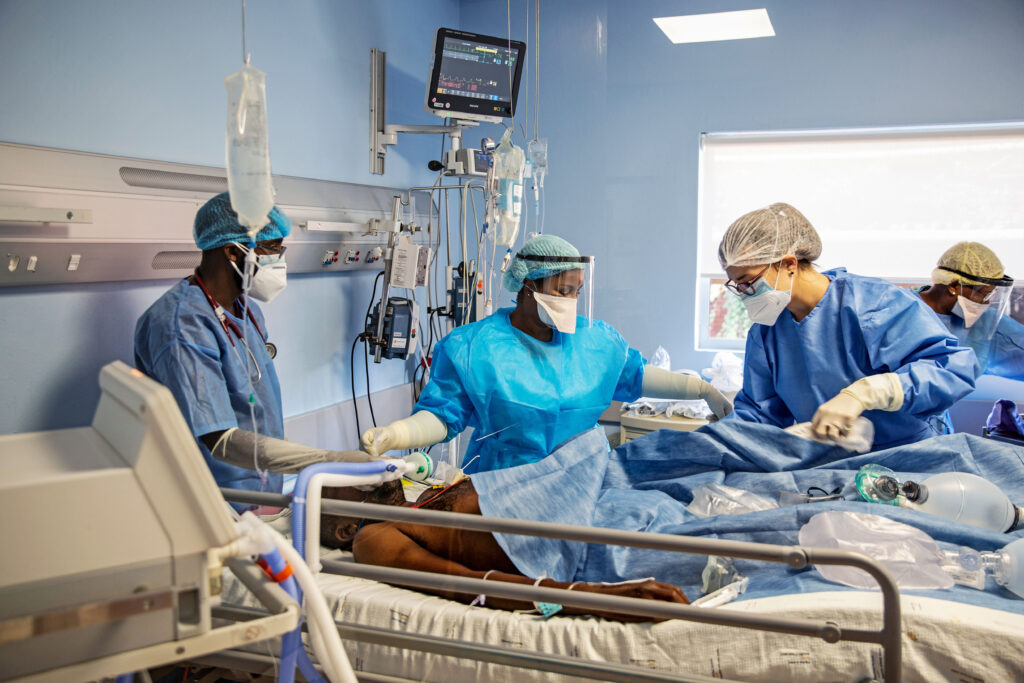- In 2022, Bhekisisa launched our own television show, “Health Beat”, and started work on an in-depth podcast, which will go live in 2023.
- In June we won a Standard Bank Sikuvile Award and in November, our team received one of the National Press Club’s two annual merit awards.
- Our staff number almost doubled from last year, with a content editor, four reporters and an impact and engagement officer having joined the ranks.
At Bhekisisa, 2022 has been a year of re-imagination.
Our newsroom was consumed by covering COVID stories for a little more than two years, but as the pandemic pulled back, it was time for a new strategy.
This meant we could get back to our first love — in-depth narrative journalism and health policy analysis. And this also brought exciting new opportunities: our own television show, “Health Beat”, a feature-style podcast series in the making (stay tuned for that in 2023) and six new staff members including four writers, an impact and engagement officer and a content editor.
We’re also proud to have received one of the National Press Club’s two annual merit awards for our reporting on the pandemic and to have won the editorial category of the Standard Bank Sikuvile awards — the fourth journalism prize for covering the health crisis in our collection.
We’re looking forward to carrying on producing high-quality journalism in 2023, but for now, take a look back at the 10 stories you loved most this year.
1. When will COVID end?
In this podcast from March, epidemiologist Salim Abdool Karim predicts what life might look like during the third year of COVID.
Listen to it again and take stock of how much has changed since then.
2. How to live longer
It sucks, but it’s true. People who exercise live longer. If you’d like to join this club, there’s an easy way to figure out how far you should be pushing your body.
Our editor-in-chief, Mia Malan, spoke to sports medicine expert Jon Patricios. He has a simple equation to help you figure out which type of exercise — and how much of it — you need.
The sweet spot is 150–300 minutes a week.
Listen here for more of Patricios’s rules of thumb.
3. What the changes in US abortion laws could mean for South Africa
Although the end of abortion rights in the United States won’t change South Africans’ constitutional freedom of choice, the move would not be without consequences, public health experts told our Joan van Dyk in May.
They were worried about three scenarios that could play out — which could make it difficult to access a safe termination here, despite South Africa having some of the most liberal abortion laws in the world.
4. South Africa’s moonlight sonata: The illegal cash cow draining specialist care at state hospitals
In July, our reporters Jesse Copelyn and Joan van Dyk introduced you to Emily Benson: an intern doctor who’d been through hell to keep a seriously ill baby alive — without any help from the hospital’s appointed paediatrician, who, instead, was treating patients in a private sector facility just a few kilometres away.
The practice of state doctors working in the private sector too is called “moonlighting” or “dual practice”. It’s not illegal when health workers follow the rules, but abuse of the concession is common.
Find out how “moonlighting” impacts both doctors and patients.
5. Why people over the age of 42 in South Africa could be protected from monkeypox
On 23 June, Health Minister Joe Phaahla repealed all the regulations that were still in place to curb the spread of SARS-CoV-2. Just one day earlier, the National Institute for Communicable Diseases recorded the first case of monkeypox (now just called “mpox”) in the country.
Our Mia Malan jumped on a call with the Institute’s Jacqueline Weyer to help us understand how the virus spreads.
6. The cruel collusion that devastates young doctors learning to deliver babies
Regan Boden, a final-year medical student, spent a month with Bhekisisa between June and July as part of his course, which requires fifth- and sixth-year students to do practical work in any clinical or research-related health setting.
He spent his time with us putting together a heart-wrenching opinion piece about his experience of obstetric violence in the maternity wards where he’s worked.
Read why Boden will never forget the first time he helped to deliver a baby.
7. A junior doctor’s battle to keep death at bay for state patients
In this August op-ed, we heard what it takes to adapt to life as a qualified doctor in South Africa’s state hospitals.
A junior doctor explains that even though she spent half a decade working to get into medical school and then another six years in training, it took just four months before her dream job completely flattened her.
Read more about how the stress of the public sector system affects health workers in training here.
8. Dirty Sprite: The DIY high that keeps SA schoolchildren numb
When Kieran Gordon was in high school, he drank up to two bottles of cough syrup a day — five times the recommended safe dose for adults. He’d mix it with Sprite to make a purple drink called “lean”.
Gordon nearly failed Grade 11, and one day, when he was trying to make a stronger mix, he overdosed. “I couldn’t talk. I felt paralysed. I couldn’t even feel my heartbeat,” he remembers.
South Africa ranks third on a list of 31 nations when it comes to buying over-the-counter codeine.
Here’s how schoolchildren are getting hold of it via our Zano Kunene, Linda Pretorius and Joan van Dyk.
9. What happened to HIV activist Zackie Achmat?
What would you find in the dream journal of one of South Africa’s most prominent HIV activists?
Our reporter Sean Christie travelled to Cape Town to spend time with Zackie Achmat and his dog, Nawal.

Dream journal in hand, he begins to read his decades-old, looping handwriting.
The narrative relates to a friend of his sister, who died of Aids at a time when the government wasn’t buying HIV treatment for people.
Achmat reads out loud: “A gay man, who was carried to the grave by lesbians, because his own family shunned him even in death.”
The activist once refused to take HIV treatment until the government made antiretrovirals available for free to everyone in the country. What is he doing now?
Find out in this profile from November.
10. Meet the first SA women to get the anti-HIV jab
In this World Aids Day edition of our television show Health Beat, our multimedia team takes you to Cape Town to meet the patients and researchers at the cutting edge of HIV prevention.
A new injection called long-acting cabotegravir (or CAB-LA for short) is much more effective than the daily pill – it virtually wipes out someone’s chances of getting HIV.
It’s also much simpler to take, because it only has to be taken once every two months.
The jab could be in South African clinics as early as August 2023 – but that depends on the price. Our Mia Malan grilled the manufacturer ViiV Healthcare to find out how they’ll decide on the price tag. Watch the full episode here.









